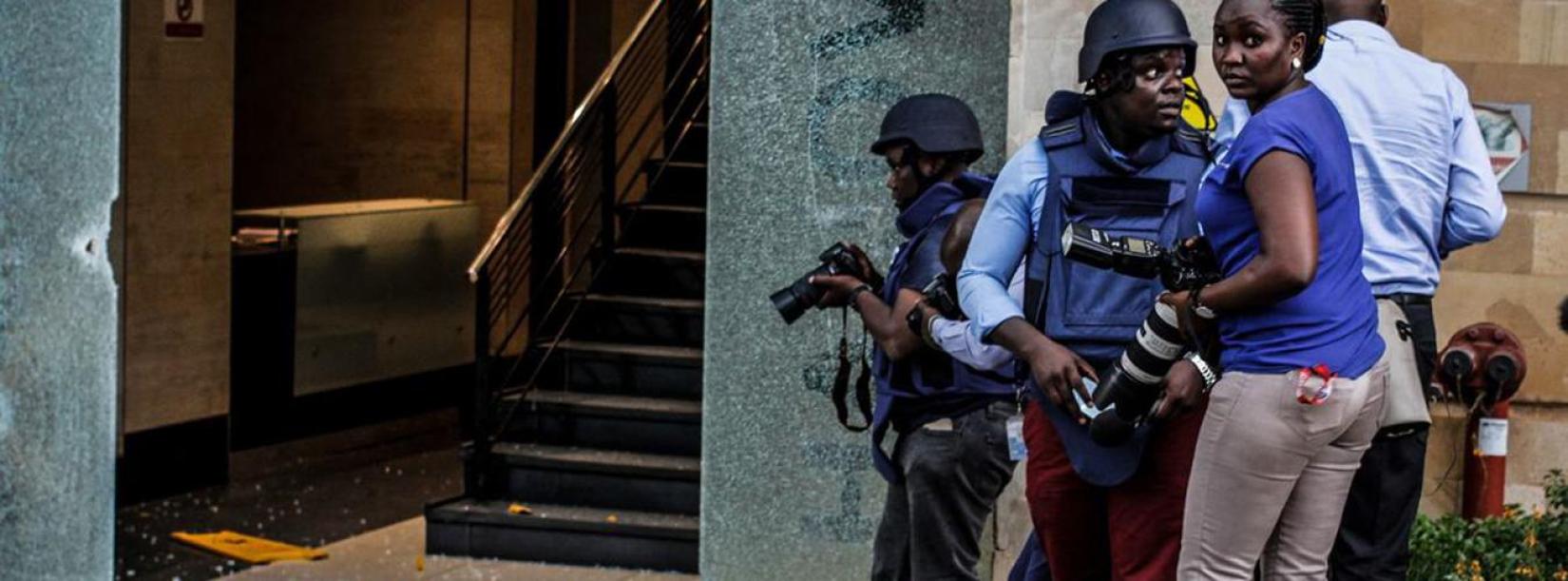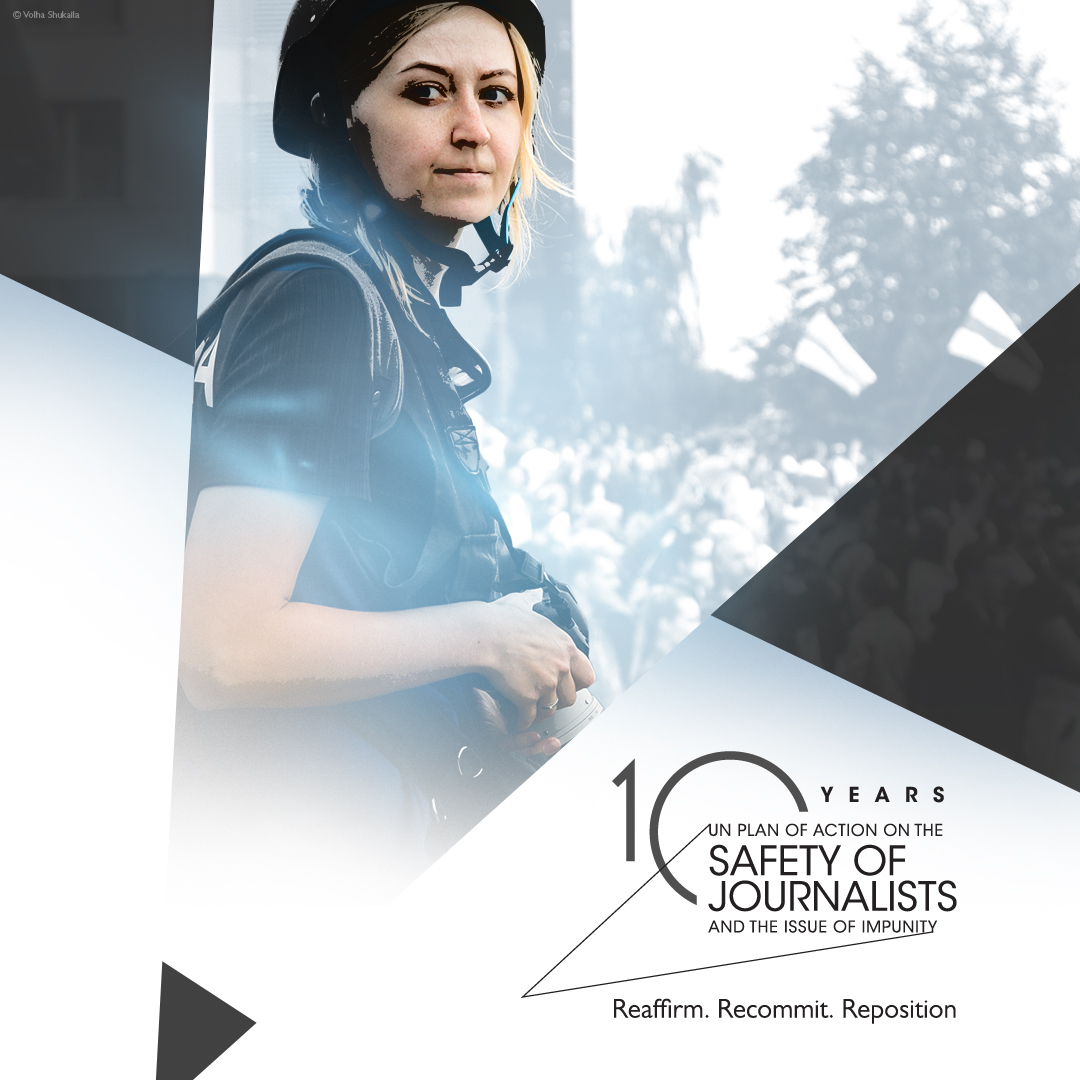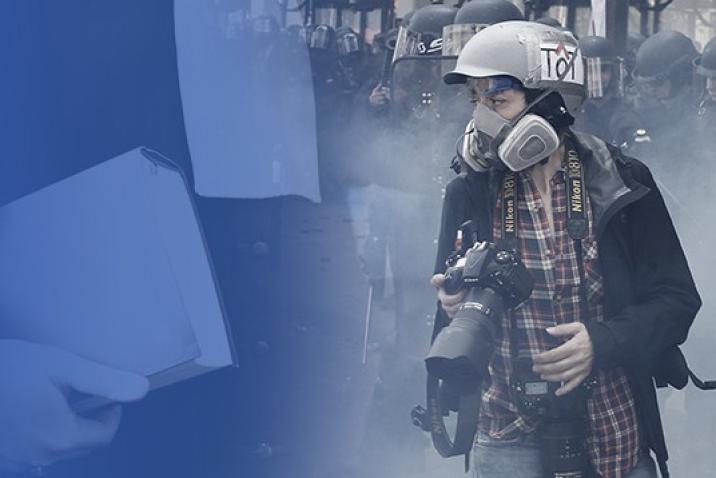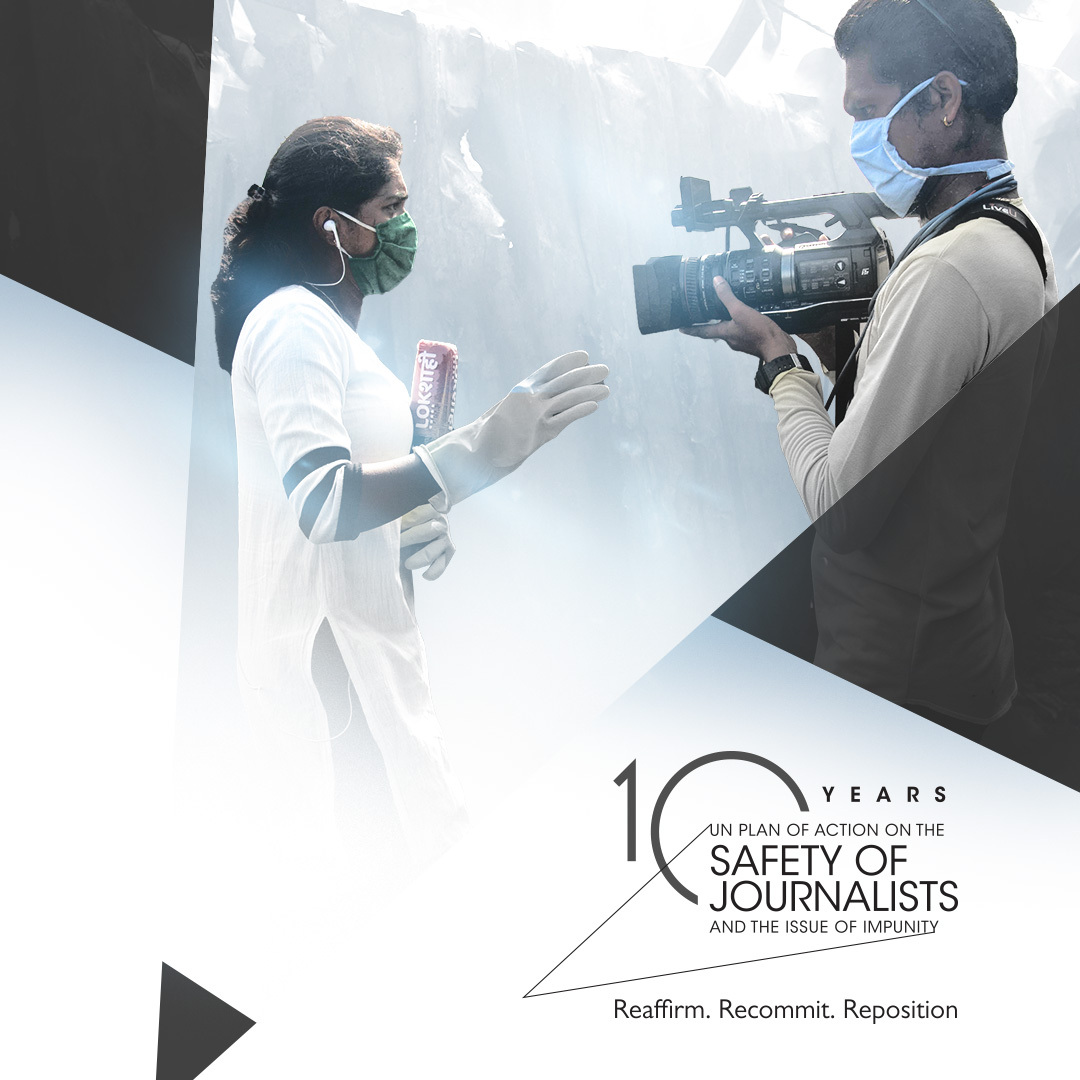
International Day to End Impunity for Crimes against Journalists, 2 November
Violence against journalists, the integrity of elections, and the role of public leadership
Ending impunity for crimes against journalists is one of the most important and complex challenges of recent times. It is an essential precondition to guarantee freedom of expression and access to information for all citizens.
The 2023 observance seeks to raise awareness of the main challenges faced by journalists and communicators in the exercise of their profession, and to warn of the escalation of violence and repression against them. These include attacks and restrictions on the press in the context of coverage of social protests; the use of judicial mechanisms against journalists for reasons related to their journalistic work on matters of public interest; and the increase of forced exile of journalists in some countries.
This year’s theme also seeks to give visibility to the role of a safe and free press in ensuring the integrity of elections and our democratic systems. It reaffirms the obligation of States to adopt effective measures to protect the independent press and strengthen institutional frameworks that combat violence and impunity, and promote media independence, sustainability and diversity.
Read more in the Concept note.
2023 Events
This year, the main commemoration of the International Day to End Impunity for Crimes against Journalists will take place on 2-3 November 2023 at the headquarters of the Organization of American States (OAS) in Washington D.C. and will focus on the violence against journalists, the integrity of elections, and the role of public leadership.
How can police officers protect freedom of expression?
How can the judiciary protect freedom of expression?
Impunity for attacks on journalists has a chilling effect on society
Latin America and the Caribbean continues to be the region with the highest number of murders of journalists, according to the 2022 UNESCO Director-General’s Report on the Safety of Journalists and the Danger of Impunity.
Since 1993, more than 1,600 journalists have been killed for reporting the news and bringing information to the public. In nine out of ten cases the killers go unpunished, according to the UNESCO observatory of killed journalists. Impunity leads to more killings and is often a symptom of worsening conflict and the breakdown of law and judicial systems.
While killings are the most extreme form of media censorship, journalists are also subjected to countless threats - ranging from kidnapping, torture and other physical attacks to harassment, particularly in the digital sphere. Threats of violence and attacks against journalists, in particular, create a climate of fear for media professionals, impeding the free circulation of information, opinions and ideas for all citizens. Women journalists are particularly impacted by threats and attacks, notably by those made online. According to UNESCO’s discussion paper, The Chilling: Global trends in online violence against women journalists, 73 percent of the women journalists surveyed said they had been threatened, intimidated and insulted online in connection with their work.
In many cases, threats of violence and attacks against journalists are not properly investigated. This impunity emboldens the perpetrators of the crimes and at the same time has a chilling effect on society, including journalists themselves. UNESCO is concerned that impunity damages whole societies by covering up serious human rights abuses, corruption, and crime. Read and share the stories of killed journalists #TruthNeverDies.
On the other hand, justice systems that vigorously investigate all threats of violence against journalists send a powerful message that society will not tolerate attacks against journalists and against the right to freedom of expression for all.
UN Plan of Action on the Safety of Journalists
 The UN Plan of Action on the Safety of Journalists and the Issue of Impunity is the first concerted effort within the UN to address attacks and impunity of crimes against journalists, with a multi-stakeholder and holistic approach. It brings together UN bodies, national authorities, media, and civil society organizations.
The UN Plan of Action on the Safety of Journalists and the Issue of Impunity is the first concerted effort within the UN to address attacks and impunity of crimes against journalists, with a multi-stakeholder and holistic approach. It brings together UN bodies, national authorities, media, and civil society organizations.
Since the plan was adopted, the issue of safety of journalists has gained a higher visibility in the UN, as evidenced by the increasing number of declarations, resolutions and other normative texts, and the UN Secretary General’s Call to Action for Human Rights. Protecting journalists is also part of the 2030 Agenda for Sustainable Development. The Plan has also contributed to building international coalitions of governments and civil society and served to bring about changes on the ground, such as the creation of national safety mechanisms in at least 50 countries.
But despite these achievements, challenges still exist. The high rate of impunity for crimes against journalists persists and new forms of threats develop in unprecedented ways.
The 10-year anniversary was a milestone to Reaffirm, Recommit and Reposition efforts to advance the UN Plan.
Background
The United Nations General Assembly proclaimed 2 November as the ‘International Day to End Impunity for Crimes against Journalists’ in General Assembly Resolution A/RES/68/163. The Resolution urged Member States to implement definite measures countering the present culture of impunity. The date was chosen in commemoration of the assassination of two French journalists in Mali on 2 November 2013.
This landmark resolution condemns all attacks and violence against journalists and media workers. It also urges Member States to do their utmost to prevent violence against journalists and media workers, to ensure accountability, bring to justice perpetrators of crimes against journalists and media workers, and ensure that victims have access to appropriate remedies. It further calls upon States to promote a safe and enabling environment for journalists to perform their work independently and without undue interference.
This part of the article have been published in the United Nations' site through this link: International Day to End Impunity for Crimes against Journalists | United Nations (https://www.un.org/en/observances/end-impunity-crimes-against-journalists)
As the United Nations agency with a specific mandate to promote “the free flow of ideas by word and image”, UNESCO works to foster free, independent and pluralistic media in print, broadcast and online. Media development in this mode enhances freedom of expression, and it contributes to peace, sustainability, poverty eradication and human rights
Read more: Fostering Freedom of Expression | UNESCO
Report on the Safety of Journalists and the Danger of Impunity
The UNESCO Director-General’s Report is a unique mechanism within the UN system for monitoring the killings of journalists. It was first published in 2008. The report is submitted every two years to the International Programme for the Development of Communication (IPDC).
Read more: Report on the Safety of Journalists and the Danger of Impunity | UNESCO
- 117 journalists were killed in 2020-2021.
- In 2020 and 2021, Latin America and the Caribbean accounted for 38% of killings, followed by Asia and the Pacific with 32% of killings.
- Only 14 percent of cases of crimes against journalists are currently considered judicially resolved.
- In 2021, the percentage of women among all journalists killed almost doubled, rising to 11% from 6% the previous year.
Source: UNESCO 2022
Safety of Journalists
Find out what the United Nations is doing on the safety of journalists.
Resources
- UNESCO website for the Day
- UNESCO observatory of killed journalists
- UNESCO Condemns Killing of Journalists
- UNESCO: Safety of Journalists
- Protect journalists, protect the truth
- Journalism, press freedom and COVID-19
- Reporting Facts: Free from Fear or Favour
- Safety of journalists covering protests : preserving freedom of the press during times of turmoil
- Intensified attacks, new defences: developments in the fight to protect journalists and end impunity
- #TruthNeverDies campaign
- #KeepTruthAlive campaign
- #MyFightAgainstImpunity campaign
- World Press Freedom Day (3 May)
- World Trends in Freedom of Expression and Media Development
- Global toolkit for judicial actors: international legal standards on freedom of expression, access to information and safety of journalists
- Guidelines for prosecutors on cases of crimes against journalists
- Legal standards on freedom of expression: toolkit for the judiciary in Africa
- School for Judges: lessons in freedom of information and expression from (and for) Latin America's courtrooms
- Special Rapporteur on the promotion and protection of the right to freedom of opinion and expression
- Reham al-Farra Memorial Journalism Fellowship
- The Committee to Protect Journalists
Documents
- Report of the UN Secretary-General on the safety of journalists and the issue of impunity (A/74/314)
- UNESCO Director-General’s Report on the Safety of Journalists and the Danger of Impunity
- UN General Assembly Resolution A/RES/68/163
- UN Security Council Resolution S/RES/2222 (2015)
- UN Plan of Action on the Safety of Journalists and the Issue of Impunity





